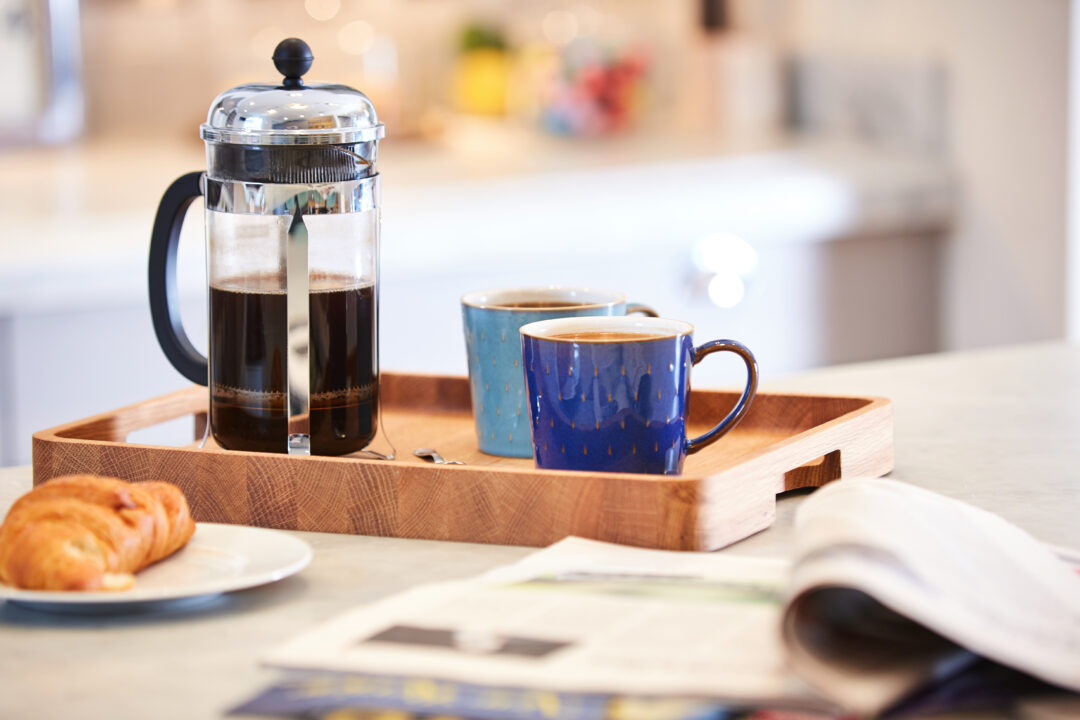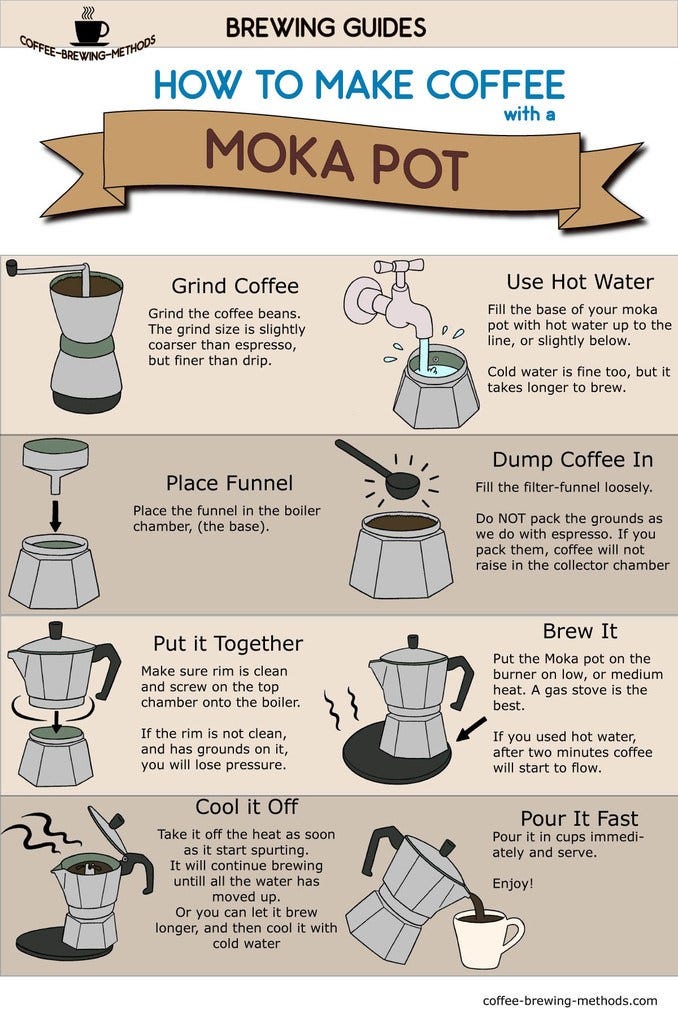Finding the Art of Coffee Brewing Methods: Tips for every single Fanatic
Finding the Art of Coffee Brewing Methods: Tips for every single Fanatic
Blog Article
The Scientific Research Behind Coffee Developing: Exactly How Temperature Level and Time Affect Your Drink
Comprehending the science behind coffee brewing reveals that temperature and time are not plain variables but critical aspects that determine the drink's flavor account and overall quality. As we explore the subtleties of these components, the question arises: exactly how can one properly balance temperature level and time to achieve that perfect mixture?
The Chemistry of Coffee Removal
The chemistry of coffee extraction looks into the complex procedures that transform raw coffee beans into the aromatic beverage delighted in worldwide. This change mostly entails the solubility of different compounds present in the beans, which are influenced by factors such as grind size, water quality, and the developing method employed.
Throughout the brewing procedure, warm water acts as a solvent, extracting soluble compounds, including high levels of caffeine, lipids, acids, and sugars, from the coffee premises. Each compound adds to the flavor account, aroma, and body of the final drink. Acids are liable for tasty and bright notes, while oils contribute to an abundant mouthfeel.
The preliminary stages of brewing essence acids and sugars, leading to a pleasant level of acidity, while prolonged extraction can lead to bitterness due to over-extraction of undesirable substances. Understanding these chemical interactions is important for enhancing brewing strategies, as the balance in between removal time and water temperature can substantially affect the total quality of the coffee.
Perfect Brewing Temperatures
Discovering the right brewing temperature is necessary for unlocking the complete possibility of coffee tastes and aromas - coffee brewing methods. Research indicates that the optimal range for developing coffee exists in between 195 ° F to 205 ° F(90 ° C to 96 ° C) Within this variety, the removal procedure successfully liquifies the preferable soluble compounds in coffee beans, resulting in a savory and well balanced mug
Developing at lower temperatures, such as listed below 195 ° F(90 ° C ), may lead to under-extraction, producing an acidic and weak brew with muted flavors. Alternatively, brewing at temperatures going beyond 205 ° F(96 ° C) can lead to over-extraction, creating a severe and bitter taste because of the too much dissolution of unfavorable compounds, such as tannins.
Additionally, the excellent brewing temperature can differ depending on the coffee bean type and roast level. For example, lighter roasts commonly profit from somewhat higher temperature levels to improve their intricate flavor profiles, while darker roasts may be much better matched to reduced temperatures to alleviate anger.
Inevitably, keeping precision in brewing temperatures is essential for accomplishing an unified balance of flavors, making sure that every mug of coffee provides an enjoyable sensory experience.
Impact of Brewing Time
Developing time plays a crucial duty in establishing the flavor profile and overall quality of coffee. The extraction process, which affects the preference, scent, and body of the drink, is mainly reliant on just how long the coffee premises touch with water. Shorter brewing times can result in under-extraction, resulting in a sour or weak flavor, as inadequate soluble compounds are dissolved. On the other hand, prolonged developing can bring about over-extraction, where unfavorable compounds are released, causing an astringent official site or bitter taste.
Optimal developing time varies relying on the approach utilized and the grind dimension of the coffee. A French press typically needs regarding four mins, while espresso removal is usually completed within 25 to 30 seconds. It is crucial to adjust developing time in combination with various other variables, such as water temperature and coffee-to-water ratio, to achieve the desired flavor account.
Understanding the influence of developing time enables coffee enthusiasts to fine-tune their brewing strategies, ultimately boosting the sensory experience of their mug (coffee brewing methods). With careful focus to this variable, one can open the complete capacity of the coffee, disclosing its distinct characteristics and subtleties
Brewing Techniques and Their Results

As an example, techniques like French press and chilly mixture enable for a much longer steeping time, causing a fuller body and durable taste as a result of raised removal of oils and soluble solids. Conversely, coffee developing utilizes high pressure try this website and a shorter extraction time, producing a concentrated shot that highlights extreme tastes and an abundant crema.
Pour-over techniques, such as Chemex or V60, offer a more controlled extraction process, enabling the maker to manipulate flow rate and water distribution, which can boost brightness and quality. Percolation approaches cycle water with the coffee premises numerous times, leading to a stronger, frequently bitter taste.
Lastly, the use of paper filters versus steel filters can likewise influence the final taste; paper filters usually produce a cleaner mug by capturing oils and great bits, while metal filters enable more oils to travel through, adding to a fuller mouthfeel - coffee brewing methods. Comprehending these subtleties can raise the coffee experience substantially
Tips for Improving Your Mixture
A well-executed mixture can transform even the simplest coffee right into an exceptional experience. To accomplish this, attention to detail imp source is important. Start with top quality, fresh roasted beans, as their taste account reduces in time. Grind the beans just before making to optimize quality, making certain the grind dimension matches your developing method-- coarser for French press and finer for espresso.
Water quality plays a crucial function; usage filteringed system water devoid of contaminations. The optimal developing temperature varies in between 195 ° F and 205 ° F(90 ° C to 96 ° C ) Too warm can scorch the coffee, while as well cool might under-extract flavors.
Timing is similarly important. For immersion techniques, steeping for three to five mins is ideal, whereas drip approaches commonly take about five minutes. Trying out brew times to locate your favored strength.

Final Thought
In recap, the elaborate partnership between temperature and time is extremely important in the coffee developing process. Understanding these scientific concepts equips individuals to improve their developing techniques, ultimately leading to an extra delightful and balanced coffee experience.
Understanding the scientific research behind coffee developing reveals that temperature level and time are not mere variables yet essential aspects that dictate the drink's flavor profile and overall quality. Understanding these chemical communications is important for enhancing brewing techniques, as the balance in between extraction time and water temperature level can significantly influence the overall quality of the coffee.Brewing time plays a pivotal role in figuring out the flavor profile and overall quality of coffee. By focusing on these components-- bean top quality, grind dimension, water temperature, steeping time, and ratio-- you can boost your coffee developing process, resulting in a regularly exceptional mug.
In recap, the elaborate connection between temperature and time is paramount in the coffee developing procedure.
Report this page